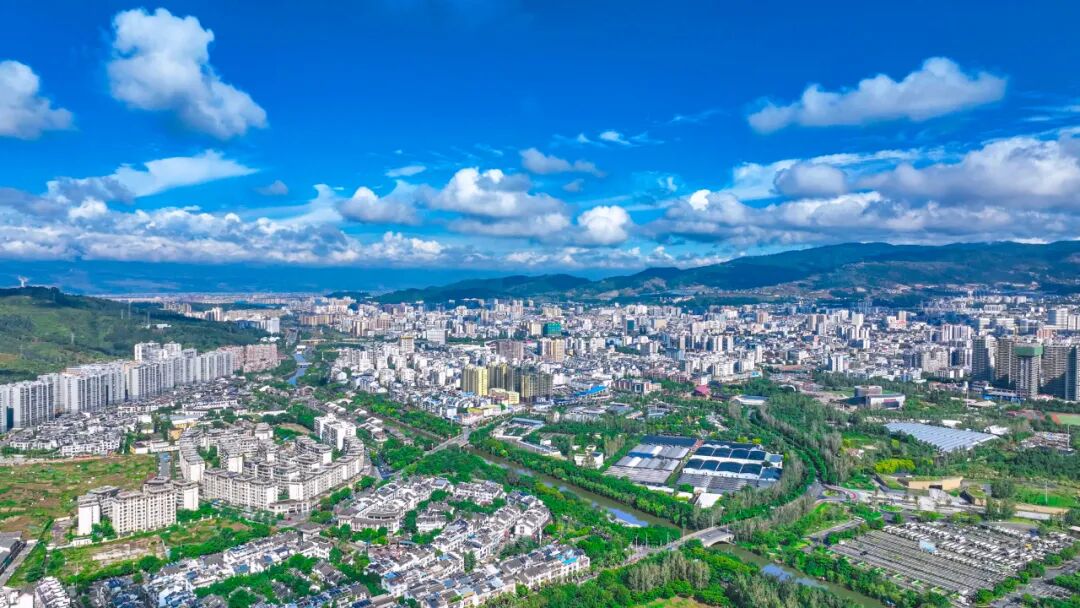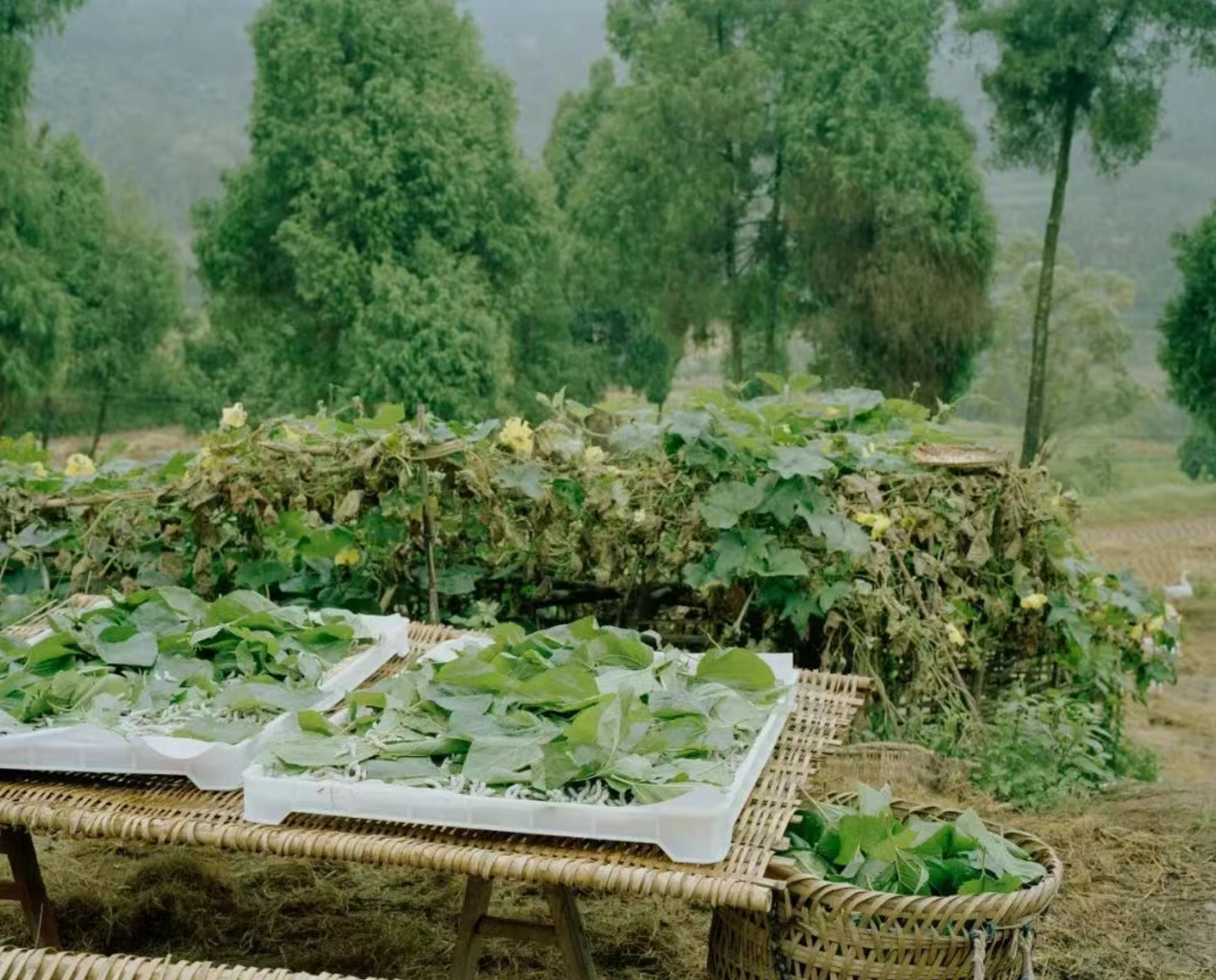Previous Highlights from the Luxe.CO Silk Culture Column:
-
The World’s Earliest Luxury Fabric Was Made in Chengdu!
-
Masters of Shu Embroidery, Hangluo, and Xiangyunsha Selected as Sixth Batch of National Intangible Cultural Heritage Representative Inheritors
-
Where Did Hermès Source the Silk for Its First Scarf?
-
How Does Hermès Manage Its Silk Supply Chain?
-
Masters of Kesi Silk Weaving, Song Brocade, Shuanglin Liling Silk, and Lu Brocade Selected as Sixth Batch of National Intangible Cultural Heritage Representative Inheritors
China is the world’s leading silk-producing country, not just in quantity but in quality as well. The largest origin of the world’s finest raw silk is located in Ningnan County, Liangshan Prefecture, Sichuan Province, which is known as the “Hometown of Mulberry and Silkworms in China.”

“Grade 6A” is the highest quality rating for raw silk. This type of silk is known for its uniform thickness, cleanliness, strength, and lengths reaching up to 1,500 meters. Silk made from 6A-grade raw silk is smooth and even, free from discoloration after dyeing, soft to the touch, and has a pearl-like luster. It is the preferred raw material for luxury brand scarves, high-end silk garments, and premium bedding.
According to a report from Liangshan News Network, Ningnan currently produces 1,200 tons of Grade 6A raw silk annually, accounting for 50% of the global market share for top-tier raw silk. Its quality indicators have ranked first in the country for 25 consecutive years. Out of its 300,000 mu (approx. 49,400 acres) of high-quality mulberry fields, 84,000 mu (approx. 13,800 acres) have received Chinese, EU, and USDA organic certifications. Organic dry cocoons account for 80% of the output, making it the largest domestically and internationally certified organic base in China.
According to the county government’s official website, raw silk from Ningnan is highly favored by buyers across regions and is sold widely in Sichuan, Jiangsu, Zhejiang, and Shandong provinces, as well as exported to countries including Italy and Romania.

Over 100 million years ago, mulberry trees originated in the Yarlung Tsangpo River basin. As a “living fossil” in the plant kingdom, the mulberry tree has demonstrated strong vitality, evolving three times faster than similar species and living naturally for up to a thousand years. Its leaves contain more than 2,000 types of proteins. Once silkworms, which feed on mulberry leaves, mature, they spin cocoons, creating raw silk in the process.
Industry experts have described Ningnan as a “rare treasure land for sericulture”:
Located at the Sichuan–Yunnan border in the southeastern part of Liangshan Prefecture, Ningnan was once an important post on the Ancient Tea Horse Road. It borders the Jinsha River to the east and has a typical subtropical monsoon climate with an annual average temperature of 19.3°C, 2,257 hours of sunshine per year, and more than 320 frost-free days annually. This abundance of sunlight and warmth is highly favorable for the photosynthesis of mulberry leaves.
Additionally, the region’s terrain is mainly composed of yellow mountain soil with topsoil thickness exceeding 40 cm and pH levels ranging from 5.6 to 8.0—ideal for large-scale and industrialized development of sericulture.

In 1966, sericulture technician Zhang Youqiong mobilized villagers to plant mulberry trees and raise silkworms. That year, they harvested 449 kg of cocoons, marking the beginning of Ningnan’s sericulture industry. After 1978, the county designated sericulture as one of its four economic pillars. In 2014, the China Silk Association awarded Ningnan the title of “Hometown of Mulberry and Silkworms in China.”
In recent years, Ningnan has actively explored a path toward the modernization of sericulture by promoting large-scale farming and factory-based production, transitioning from small household operations to integrated commercial management. At the Ningnan County Sericulture Development Conference in February 2025, Wang Yang, son of “Top Silkworm Farmer” Wang Zuohai, shared, “In 2024, our farm produced 37,500 kg of cocoons, with silkworm-related income totaling RMB 2.06 million [approx. USD 285,000], of which net profit was RMB 800,000 [approx. USD 111,000].”

In 2024, Ningnan raised silkworms on 330,000 trays, yielding 302,000 dan (approx. 15,100 tons) of cocoons. Cocoon sales generated RMB 846 million [approx. USD 117 million] in revenue for farmers, with the overall industry output reaching RMB 3.184 billion [approx. USD 441 million]. The county invested RMB 23 million [approx. USD 3.2 million] in rural revitalization, post-relocation support, and industrial zone incentives to support high-quality mulberry plantations, silkworm breeding greenhouses, and shared incubation facilities. Today, the sericulture industry is one of Ningnan’s most important economic pillars.
With the flourishing of sericulture, Ningnan has experienced a remarkable transformation in both economy and livelihoods over the decades: In 1950, the county’s urban area covered just 0.7 square kilometers with a population of only 61,000. In 1952, the agricultural output was RMB 7.84 million [approx. USD 1.1 million], and industrial output was RMB 360,000 [approx. USD 50,000]. By 2024, Ningnan’s GDP reached RMB 10.868 billion [approx. USD 1.5 billion], reflecting a 7.0% year-on-year growth at constant prices.

Alongside the thriving sericulture industry, wellness and healthcare tourism is becoming another signature feature of Ningnan.
With its picturesque scenery, 100% annual air quality rating, and 55% forest coverage, Ningnan is home to two national 4A-level scenic spots: Kaidilira and Jinzhong Mountain. These assets make it the only natural greenhouse in the Panzhihua–Xichang region and an ideal winter destination for wellness tourism. It is also home to the Baihetan Hydropower Station—the world’s second-largest hydroelectric power plant after the Three Gorges Project. Additionally, Ningnan is the largest settlement of the Bouyei ethnic group in Sichuan.
| Sources: Liangshan News Network; Liangshan Daily; Ningnan County Government Official Website; Documentary Plants That Changed the World
| Image Credit: Ningnan County Government Official Website
About the Luxe.CO Silk Culture Division
In March 2025, Luxe.CO officially launched its Silk Culture Division, with a mission to promote Chinese silk heritage and help high-end industry professionals gain a deeper understanding of the richness and boundless potential of Chinese silk culture. The division aims to inspire dialogue and innovation in the revitalization and modernization of the silk industry.
In addition to producing original high-quality content, Luxe.CO will launch a series of curated cultural and industry initiatives, including source-tracing journeys, forums and workshops, art exhibitions, and more. Guided by first principles, the division seeks to uncover the origins of silk—from culture to commerce, from materials to craftsmanship, from history to the present, from China to the world—integrating the entire industry chain and exploring the essence of silk culture and craftsmanship from a new perspective.
Contact email for the Luxeplace Silk Culture Division: silk@luxe.co


![From Luckin Collaboration to Debut in Italy, Shu Brocade Goes Viral This Summer! [Luxe.CO Silk Culture Column]](https://cdn.luxeplace.com/wp-content/uploads/2025/09/%E5%BE%AE%E4%BF%A1%E5%9B%BE%E7%89%87_20250828141820_343_3.jpg)
